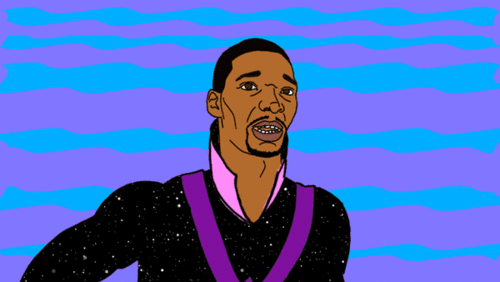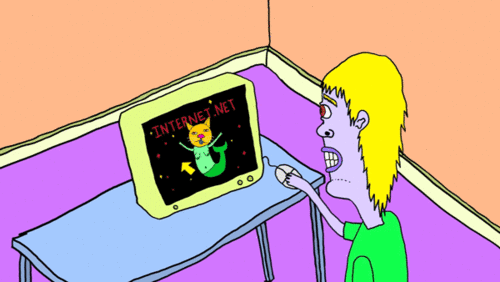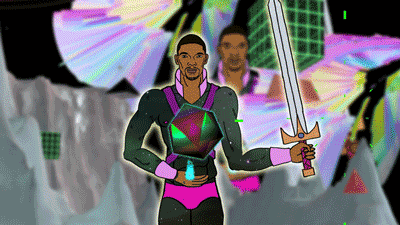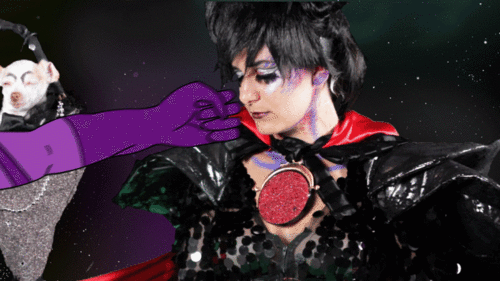
Borscht Corp’s “Adventures of Christopher Bosh in the Multiverse”
By Chris Quinn, Borsht Corp
Starting today, we are going to be posting videos from the Borscht vault online for the world to see. We will release a new one every few weeks or so for the rest of the year. Most will be accompanied by an essay from someone we like. In honor of the begining of the Miami Heat’s playoff run, our first release is “Adventures of Christopher Bosh in the Multiverse” by Bleeding Palm (2012). The essay is by Minister of Jurassic Arts and point guard Chris Quinn. Enjoy! “Adventures of Christopher Bosh in the Multiverse” is the first film by mysterious Miami creators Bleeding Palm. Although Bleeding Palm has been creating work for many years under other names like Lucha Workshop, they didn’t come to my attention until I saw their “live event” photography. A slideshow that began with the typically boozy portraits of Churchills denizens progressed to include subtly surreal elements such as misplaced or disproportioned body parts which gave way to obvious manipulations like the excellent band Holly Hunt sprouting new facial hair and traveling through space. The arc of the slideshow ended with both the crowd and the band abstracted and animated into a Gif of geometric shapes, disconnected breasts bouncing through it all. More than being a clever take on the staid party photo slideshow format, the manipulated images somehow felt more like the event they were portraying than the literal, unaltered photos.
Intrigued, I dug further and found that they had created projects such as a fictional tourism website for the Everglades (tourist advice: Do not ever go in the Everglades, not even once. Everything can kill you. Everything can eat you.) complete with animated .Gifs of exotic plants giving birth to miniature Jennifer Lopezes and Gloria Estefans. Also in their portfolio: a fictional Florida Turnpike website, wherein Governer Rick Scott announces he is giving all citizens jetpacks as his body melts. At face value, both projects were well-executed bits of funny psychedelia, but what separated them from others was a somewhat stunning lack of irony in the work.
The two websites achieve the difficult feat of earnest satire- they don’t approach the state’s glaring insanity with the condescension typical of national press or the blunt, literal anger of most locals, but rather reappropriate the faux-official vernacular used by politicians and bureaucrats to justify the insanity they condone and combine it with the color palate and imagery used by tourism agencies to create an absurdist portrait of a nightmare in paradise. It’s Kafka by way of Ionesco, in an animated Gif.

If everyone around you is insane, are you still sane? They seem to sense the futility of satire in this instance, and eventually end up at some sort of obvious sexual joke or insult directed at the reader. A cosmically mumbled “nevermind.” This is the existential darkness that simmers just below the surface of every joke. While it sounds heavy, they manage to find poetry in the humor of prototypically Floridian misery when they describe the turnpike as “moving like so much steel and fiberglass diarrhea through concrete intestines of despair” and dividing the state into the categories of “demilitarized zone,” “construction,” and “basically a parking lot” in a cheery map.
They are a vital voice that could only exist in Miami- feral, self-taught artists expressing their idiosyncrasies in fresh, intelligent (if not academic), accessible forms.
I immediately sought them out to collaborate in the creation of a website for our own fictional film festival. Created as an April Fool’s joke in 2011, the Bosh Film Festival was founded when NBA power forward Chris Bosh donated 1% of his salary to the Borscht Film Festival, and we renamed it in his honor. It was a bad joke that only worked because our name is so stupid to begin with. The Miami Herald was about to run the story when Bosh’s people debunked it. Whatever that means, it resulted in some fun phone calls.
Bleeding Palm was essentially given free rein to create whatever they liked for the Bosh Film Festival website, and instinctually began to depict Bosh as a character in a larger mythology with an intricate system of rules- sort of an MMORPG combined with NBA fan fiction. As we went back and forth a narrative began to develop alongside the aesthetic of a transdimensional being barely containing his infinite nature in the confines of our world. Whether through creative interest or unhealthy obsession, we wanted to continue the Bosh narrative in other forms, so we set about adapting the website into a screenplay.

The story is centered around two real-life events- Chris Bosh’s injury during the 2ndround of the 2012 playoffs that sidelined him for several weeks before he returned in time to help the team win the championship, and the gruesome story of the Miami“causeway cannibal” that made national headlines around the same time. A homeless man named Ronald Poppo was taking a nap under the Julia Tuttle overpass when he was viciously attacked by Eugene Rudy, a naked man presumably under the influence of bath salts. Eugene ripped off Ronald’s clothes and proceeded to devour his face in broad daylight before police arrived and shot Eugene to death. Poppo was taken to a hospital and eventually made a recovery, but his face was disfigured and he lost use of his eyes. To add to the mystery, an autopsy would reveal that the “cannibal” was not under the influence of any drugs after all. When Poppo regained consciousness, the first words spoken by the huge basketball fan were “go Heat.” A few days later the Heat would win the title, and the championship parade would take the celebration past the scene of the gristly attack. The stains were barely removed from the sidewalk before people were dancing to Pitbull on them, trying to get a glimpse of LeBron James, or perhaps catch a commemorative t-shirt launched from a hydraulic tube by our fuzzy orange mascot.

The aesthetic mirrors the content of the film in its omnivorous integration of cultural elements. Included in both the script and animations are references to obscure NBA jokes, sports blogs, memes, performance art, seapunk, glitch art, new aesthetic, K-Pop, Power Rangers, minor political scandals, Turkish cinema, and various early 90’s web easter eggs. It’s Athenian tragedy for the tumblr generation, wherein meaning is derived from both fact, fiction and several generations of their recontextualization utilized as universal touchstones.
Many of the actors are all playing fictionalized versions of themselves. Mystic Wolfman Barfar is played by Jaysson Musson- a Philadelphia based artist known for his digital character Hennesy Youngman that gives parodic advice to aspiring artists via YouTube videos. Jillian, the Evil Space Witch who is plotting to make the Internet completely useless, is played by Jillian Mayer, a performance artist who manipulates the net to tease meaning from disposable digital interactions (often to the tune of millions of views). Also in the cast are Amy Seimetz (director of Sun Don’t Shine and actress in Upstream Color, as well as Christopher Guest’s new HBO show), Terence Nance (director and star of An Oversimplification of her Beauty), Matthew Lillard (director of Fat Kid Rules the World and actor in SLC Punk, Scream and Scooby Doo), Wes Borland (guitarist for Limp Bizkit) and several others. Perhaps of most interest in that the narrator is (allegedly) played by Ronald Poppo himself, who loved the idea that he was responsible for his beloved team’s championship.
In our mythology Poppo saves the day and prevents Jillian from turning the real world into the Internet. In reality, he became an online sensation not just for the unique brutality inflicted upon him, but because of the ubiquity of the gory images of the attack and the aftermath- images which were almost immediately turned into memes and zombie jokes and disseminated across the world. The speed at which it went from a horror story to a punchline was stunning, and may imply that the Evil Space Witch may have in fact won. I don’t think this has anything to do with the trivialization of suffering, but rather the fact that all history is a process of crystallization- the truth is too messy, too nuanced to fully understand, and the more history exists the more it needs to be compressed for the limitations of the human mind- a year becomes a page, a decade becomes a paragraph, a century becomes a word: “the dark ages,” “the renaissance,” – a single image to represent the lives and deaths of millions, an image so compressed is loses any tether it may have once had to reality. Whereas this was once a process that took decades, this now happens within minutes as we careen towards the singularity. No matter the content – whether it be genocide or a cat video or a man’s face getting eaten in broad daylight- everything is almost immediately compressed to a simple idea, or hundreds of iterations of 140-character interpretations, further compounded to it’s basic elements- whether it be a looping gif or single-frame meme. The totality of our existence to be boiled down to one thought and repurposed endlessly, if we are lucky.
Bleeding Palm intrinsically understands storytelling within this paradigm, and seem to question the idea that accepted history is likely just as distorted and fictional as their work. Thousands of years from now, how will the Florida Turnpike, or the Everglades, or the NBA, or Florida itself be remembered? Bleeding Palm seems to be offering their version of events as one that is just as valid as what may eventually be accepted as true. As evidenced by the multiple Cease and Desist letters sent by the NBA and Chris Bosh’s agent upon the release of the trailer, not everyone may agree, but these dissenters are ultimately fighting a battle that has already been lost.
When draconian copywright laws are changed to reflect the reality of digital creation, we hope that this film, despite its interminable 11-minute running time, will serve as a representation of that specific moment in moment in history. Or at the very least, we hope you enjoy the boob and drug jokes.
At the time I lived a few blocks away from the attack in Overtown, and the mood was eerie. The hoards of homeless that roam the neighborhood seemed far more ominous; the area became tense- particularly after Miami Heat home games when thousands of wealthy fans would spill into the streets of the same neighborhood. This juxtaposition was the feeling at the center of the film, and the narrative became a way to connect the dots of these two disparate events that captured the imagination of the city simultaneously. The zeitgeist of Miami was crystallized in the duality of the moment- the question of “why” was beyond the realm of comprehension, but the question of “how” is something we could tackle. At its most basic, narrative is a tool that creates the illusion of order within the chaos of existence. Humans intrinsically make up stories to explain what cannot be explained- this is the genesis of entertainment- from the first Paleolithic reenactments of “the hunt” to Greek theater to mythology to religion. “Bosh” then, is an exercise in Miami mythology- a story that explains, in more honest terms than facts, how these two events came to happen.
The purpose of the film is to allow an audience to be figuratively torn apart by the terror of existence in a safe context to be later made whole again at the conclusion- exorcising collective demons while affirming not just human aguish, but also the meaning of their existence within it. The film presents the scope of the inseparable ecstasy and suffering of human condition, and in doing so allows us to reconcile the stories of both Bosh and Poppo. In ancient Greece almost all citizens would attend theater to watch fictionalized stories of current events and thinly veiled representations of public figures- understanding and finally purging themselves of their societal ills. Similarly, the sensation of communal catharsis was palpable when the film was played for an audience of almost 2,000 at the Borscht Film Festival, just blocks from where both events occurred. These moments of true (if absurd) community building are rare, and show the rare power of art in a communal setting.

Recent Content
-
Artsarticle ·
-
Artsarticle ·
-
Artsarticle ·

